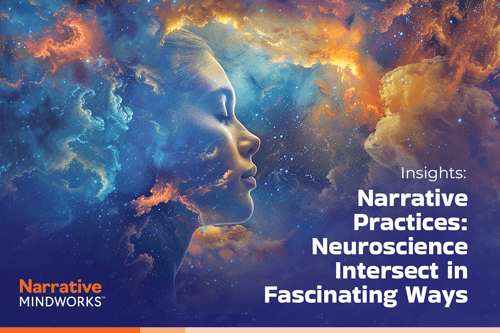The Neuroscience of Consciousness: Humans’ subjective awareness of the world and our internal thoughts and feelings are what distinguish wakefulness from sleep or other unconscious states. A network of brain regions including the thalamus and brainstem – called the ascending reticular activating system (ARAS) – function together as the command center and are fundamental prerequisites for conscious awareness. Consciousness-making activities are determined by verbal, physical and visual stimuli interacting with the ARAS.

The Global Neuronal Workspace Theory This is based on Bernard Baars’ framework for thinking about consciousness sequencing, wherein neurons broadcast through a variety of areas in the brain to create a network that animates what is defined as conscious experience. This occurs when sensory inputs or memories receive stimulation. This information is broadcast globally across various areas of the brain, triggering cognitive systems activation and consciousness.
Integrated Information Theory Any living system that combines integrated systems processing is thought to experience consciousness. The assumption is that integrated information experiences are fundamental to the universe.
Narrative Power Human interaction and experience habituate our responses to both animate and inanimate objects. Our mentalizing networks take learned experiences and create an imprint, a narrative hub of sorts. This narrative hub is used to capture and process emotions and motivations and create a predicative belief system of both ourselves and others. The act of self-narration is the concentrated assemblage of the hub inputs in the effort to connect our experiences and those of others.
Storytelling Idealism and Monism
The act of storytelling is generally arrived at through two primary metaphysical views of monism and idealism. Most involved in the study of neuroscience are monists. Anil Kumar Seth. a renowned British neuroscientist and proponent of materialism, posits that what we perceive is not an unbiased reflection of the spaces we inhabit, but rather secondary interpretations of innumerable material mental state inputs, consisting of the state of consciousness and of material things. The thesis of materialism is that matter is primary to any secondary run routines and a byproduct of material object's interactions. Ideas or idealism advocate the primacy of consciousness as the pinnacle structure of interpretive human communication or storytelling. Whether one is an idealist or a materialist, the phenomenon of the mind-body connection is narrative perception. Whether interpretive or reactive, it is the basis for the production of connective storytelling. What is inarguable is the extraordinary impact narrative practice has on shaping the motivations, actions and views of others.
"Beauty is in the eye of the beholder," a phrase derived from ancient Western cultures, highlights the human urge to make meaning through making story. Whether a teller's tale is strictly subjective based on conscious, biased input, or in the case of a primordial conscious nature, the absolute truth, the act of production is paramount in shaping individuals, cultures, and societal groups. Most believe reality is what you imagine it to be. Regardless of hierarchical order, what is understood is that the confluence of myriad internal and sensory inputs continuously shape and evolve our perception of what is perceived reality.
 Storytelling provides educational and psychological benefits, and stimulation of imagination. In turn these skills advance communication and problem-solving potential, as well as improving vocabulary. Near Infrared Spectography (NIRSpec) testing on young children has shown prefrontal lobe blood flow differentials when exposed to picture books and storytelling, establishing that the third object is creating an action within the brain. Evolutionary approaches to both individual and group narrative practice conventions -- the act and art of storytelling – are shaped by culture as well as exerting force on evolving cultural norms and our understanding of the world.
Storytelling provides educational and psychological benefits, and stimulation of imagination. In turn these skills advance communication and problem-solving potential, as well as improving vocabulary. Near Infrared Spectography (NIRSpec) testing on young children has shown prefrontal lobe blood flow differentials when exposed to picture books and storytelling, establishing that the third object is creating an action within the brain. Evolutionary approaches to both individual and group narrative practice conventions -- the act and art of storytelling – are shaped by culture as well as exerting force on evolving cultural norms and our understanding of the world.
Notes:
Unlocking the Mind: The Neuroscience Behind Our Conscious Reality. https://neurosciencenews.com/consciousness-neuroscience-23299/.
Why the Brain Loves Stories - BrainFacts. https://www.brainfacts.org/neuroscience-in-society/the-arts-and-the-brain/2021/why-the-brain-loves-stories-030421.
Consciousness and Creation: The Neuroscience of Perception. https://futureofstorytelling.org/case-study/consciousness-and-creation-the-neuroscience-of-perception/.
Spirituality and Cognitive Neuroscience: A Partnership for Refining .... https://link.springer.com/chapter/10.1007/978-3-319-31380-1_12.
The intersection of "conscious narrative and neuroscience" is a captivating exploration that unravels the intricate workings of our inner selves. Let's delve into this fascinating realm:
Yabe M, Oshima S, Eifuku S, Taira M, Kobayashi K, Yabe H, Niwa SI. Effects of storytelling on the childhood brain: near-infrared spectroscopic comparison with the effects of picture-book reading. Fukushima J Med Sci. 2018 Dec 8;64(3):125-132. doi: 10.5387/fms.2018-11. Epub 2018 Nov 14. PMID: 30429413; PMCID: PMC6305786.

